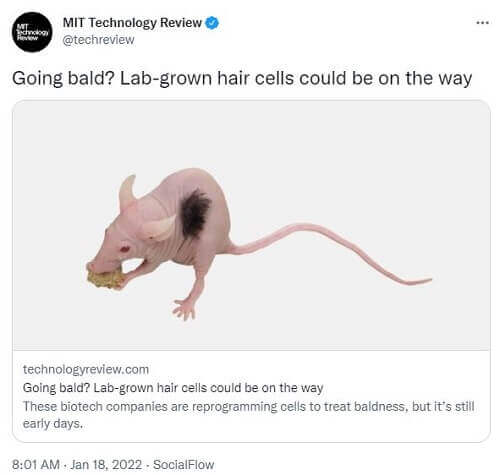Summary of Jason Bhardwaj’s video at the bottom of this post:
- Follica FDA approval targeted for 2023.
- Seems like Phase 3 trials should start shortly. They were supposed to start in 2019-2020, but got delayed.
- 6 brief in-office treatments.
- Cost = $3,000.
- 75% chance of strong hair growth effect. 25% chance of modest effect.
Follica
Of all the companies that I have covered on this blog, Follica (majority owned by PureTech) is by far the most frustrating. The company was founded in 2005 and its CEO is Jason Bhardwaj. I have covered Follica regularly since this blog was incepted in August 2013.
Regular readers (and myself) expected Phase 3 clinical trials of Follica’s drug-device to have been completed at least 2-3 years ago. Yet here we are in 2022, getting a poster instead. The company’s invention (a scalp wounding device) is relatively straightforward in concept.
The purposeful scalp wounding and injury phenomenon has been proven to grow hair in numerous studies (see my post on at-home microneedling). Not entirely surprising, since even friction from long-term cast use has often grown hair in people.
Follica’s device is unlikely to require any kind of hurdles in being approved by the US FDA, as the potential for side effects seems negligible. Moreover, all signs are that the company will initially only use Minoxidil in combination with the device. Minoxidil was already approved by the FDA to treat male pattern hair loss in 1988. In fact, people are now increasingly taking off-label oral Minoxidil to treat their hair loss.
Jason Bhardwaj Presentation
Yet I keep covering Follica and giving them the benefit of doubt. Future hair cloning and hair multiplication related hair loss cures will always have the potential of major side effects. Not to mention major cost in the initial years. New medications will also be met with some trepidation when in comes to long-term side effects. In contrast, wounding related side effects will most likely be limited to minor scalp bleeding. And some scalp skin deterioration in the worst cases.
Recently, I discovered the below (see bottom of post) video presentation from Follica CEO Jason Bhardwaj. It is on Peter Diamandis’s YouTube channel. The presentation happened fairly recently and it is the first time that I have seen Mr. Bhardwaj talk. I am assuming that Mr. Diamandis arranged the conference where the below video was filmed.
Peter Diamandis Needs my Money
A funny story. In 2008, I flew across the country to attend the Singularity Summit (initiated by Ray Kurzweil) in San Jose, California. After the event was over, one of the younger guys that I befriended invited me to a mini-conference and dinner that he was organizing in a large private room in a restaurant.
Little did I know that just 20 or so people would be in that room. As soon as I entered, Mr. Peter Diamandis (at the head of the table ) approached me and shook my hand vigorously and gave me a huge smile. Within a few minutes, it became clear to me that this was a major donor meeting based on Mr. Diamandis’ intro. I was totally out of place with my lower middle class living standard.
I immediately left the restaurant after telling my organizer friend that I knew no-one in the room. Even he seemed a bit uncertain and had the deer-in-headlights look after witnessing the list of accomplished attendees. To this day, I have no idea why he invited me in the first place.
Having said that, Mr. Diamandis is known as Mr. Optimism. He is always smiling and overly optimistic about everything. You never read or hear even one pessimistic statement from him on Twitter or in his numerous YouTube video appearances.
